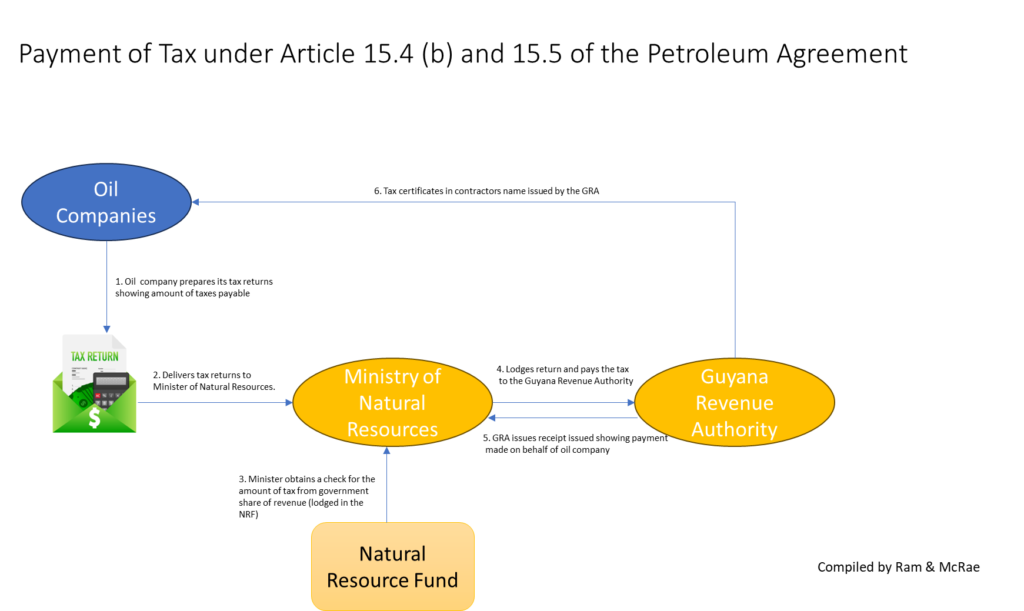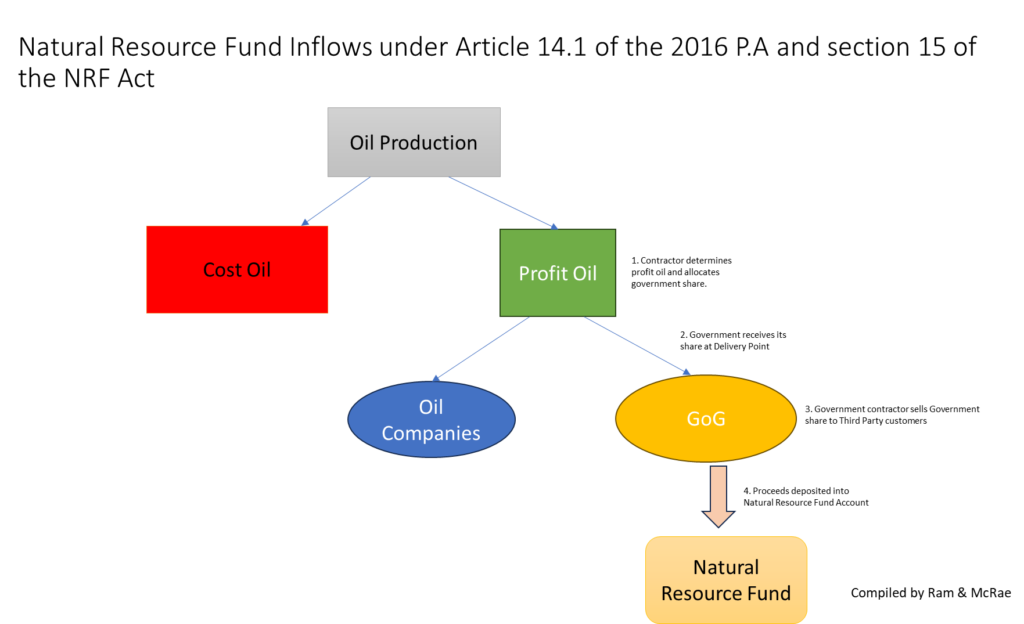January 2, 2022
Dear Editor,
Mr. Anil Nandlall S.C. Attorney General and principal legal adviser to the Government has written rather disparagingly about comments I made in my last Friday‘s Stabroek News oil and gas column. Without naming me or addressing any of the extensive data, sources and arguments I used in arriving at my findings, he claims that my assertions were “grounded in a shocking misunderstanding and misinterpretation of the intendment policy and express provisions of the Natural Resource Fund Act 2021, as well as a misconception of certain elementary principles of law”. In his opinion, they were so serious “that to leave such legal fallacies untraversed on the public record would be a grave omission.”
Unwittingly acknowledging the ubiquity and the connection between actions of the Government and private and political corruption, Anil thought it necessary to point out that I made no accusation about corruption. I apologise for disappointing him. More substantially, Mr. Nandlall seems to misunderstand the differences in the nature and functions between a Natural Resources Fund and a Consolidated Fund because “[the funds] will eventually be deposited into the Consolidated Fund”. At best, that is misleadingly simplistic.
The NRF is a sovereign wealth fund established under separate legislation to garner, manage, invest and use the proceeds from the exploitation of non-renewable resources for current and future generations. Its structure, objectives and management are vastly different from those of the Consolidated Fund. A properly managed NRF aims to use only the income generated from the investment of the funds in the NRF. On the other hand, the Consolidated Fund is effectively the operating fund for the day-to-day financial operations by ministries, departments and other budget agencies of the government. It is managed by public servants in a very decentralised framework.
Mr. Nandlall is not alone in confusing the two funds. That same conflation was made in a 22 June 2022 article in the Stabroek News quoting the Commissioner General of the Guyana Revenue Authority. One hopes that this misconception is not the reason for the confusion whether moneys were paid to the GRA for it to issue receipts and tax certificates to Hess and Exxon to claim credit in the USA for tax “paid” in Guyana.
Anil’s volunteering that section 15 (1) and (2) of the NRF Act authorises petroleum revenues to be paid directly into the Fund is not relevant to anything in my column. The point the column made is that the NRF Act does not provide for the withdrawal of money from the Fund to pay the taxes for the oil companies, an omission I described as a disconnect, and for which I made a recommendation. Instead of acknowledging the omission and committing to fixing it, Anil cites the supremacy provision of section 45 of the flawed Act and that the “draughtsman’s mind was alive” to what taxes are to be paid directly to GRA – another irrelevant non sequitur.
More seriously, Anil asserts that the provisions in the Agreement on taxation have “obviously been overtaken by the Natural Resource Fund Act”. He has achieved by default – and unilaterally to boot – provisions which the Government has claimed are sacred and beyond renegotiation.
Anil also displays surprising carelessness when he claims as “a very rudimentary principle of law that if a contract conflicts with a Statute, the Statute shall prevail.” I need to remind him of the Rudisa v Guyana case [2014] CCJ (OJ) in which he was lead Counsel for Guyana. The judges lost no time in rejecting his argument that a failure by Guyana to honour its Treaty obligation was somehow excusable because of good faith efforts by the then PPP/C Government.
Ruling against Guyana, the CCJ unanimously re-affirmed the legal principle “pacta sunt servanda” (“agreements must be respected). Just in case Anil thinks that the reason for the CCJ’s decision was that the matter arose solely out of the Revised Treaty of Chaguaramas, it is in fact a long-standing principle laid down in Trendex Corporation v Central Bank of Nigeria [1977] 1 QB 529 that sovereign immunity, including lawmaking, does not generally apply to commercial cases.
Anil’s argument that the NRF Act applies to the 2016 Agreement, and by implication with retroactive effect, is not without considerable difficulties. But even if those hurdles are crossed, it is unlikely that this extends to making the stability clause(Article 32) in the Agreement inoperable. That clause, while not forbidding any changes in the law, provides, inter alia, that “the Government shall promptly take any and all affirmative actions to restore the loss or impaired economic benefit to Contractor, so that the Contractor receives the same economic benefit under the Agreement that it would have received prior to the change … “
Prior to Nandlall’s statement, there was nothing in the public domain to suggest that the new legislation affects the 2016 Agreement in any manner, let alone requiring resolution. For example, the most recent audited annual financial statements of Hess and Exxon continue to reflect no change in their entitlement, or their understanding of the tax provisions. Mr. Nandlall’s reactive interpretation will certainly excite them.
Meanwhile, Mr. Nandlall can help Guyanese in providing answers to the following questions.
- Does his statement on his Facebook page represent his and the Government’s official position, or was it personal and unofficial?
- Did he or the subject Minister, at any time since the passage of the NRF in 2021, have any discussion with Exxon, Hess and CNOOC on his interpretation of the implications and consequences for the Agreement?
- Were his interpretation and its consequences accepted by the oil companies?
- Was there a resolution in accordance with Article 32 (3) and how was that resolution formalised?
- Since he does not agree with my interpretation of Article 15 (4) (b) of the Agreement regarding Government’s obligation to pay the tax out of its share of profit oil, can he say what the correct interpretation is?
- By virtue of section 45 of the NRF Act to which he accords supremacy status, is Guyana now relieved of the obligation to pay the taxes of the oil companies?
- Would he be kind enough to provide a schedule, with particulars, of the Certificates of Taxes issued by the Guyana Revenue Authority under Article 15 of the Agreement?
- What was the source of the money used to pay such taxes for the oil companies?
- If no Certificates of Taxes were issued, were there any other receipts, acknowledgments, documents or confirmation from the GRA to the oil companies of taxes paid on their behalf?
- Given Anil’s assertion that the Agreement is overtaken by legislative changes, does he consider that further changes are within the exclusive powers of the Government, without restoration of benefits?
I share with Guyanese three very fundamental concerns about the 2016 Agreement.
- The use of the Government’s share of oil profits to pay the taxes on behalf of the oil companies.
- The stability clause which effectively deprives Guyana of legislative sovereignty until 2057 – give or take a couple of years.
- The Government’s insistence on the sanctity and inviolability of the 2016 Agreement, making it beyond renegotiation.
Mr. Nandlall’s response to the column suggests that he has found a magic formula to overcome those concerns. If his statement represents the Government’s position, it is the best news for the country at the beginning of a new year. It also portends that Guyana can settle other concerns about the environment, insurance, level of royalty and allocation of profits in the Agreement without adverse implications.
Finally, it would certainly be preferrable for the conversation I am having with Anil to take place more widely, including in the National Assembly. Currently, that is wishful thinking. But I do believe that Anil is committed to constructive dialogue and that he too recognises the benefit of our exchange.
I therefore welcome his response and look forward to his answers to my questions and confirmation of my conclusions.
Christopher Ram


